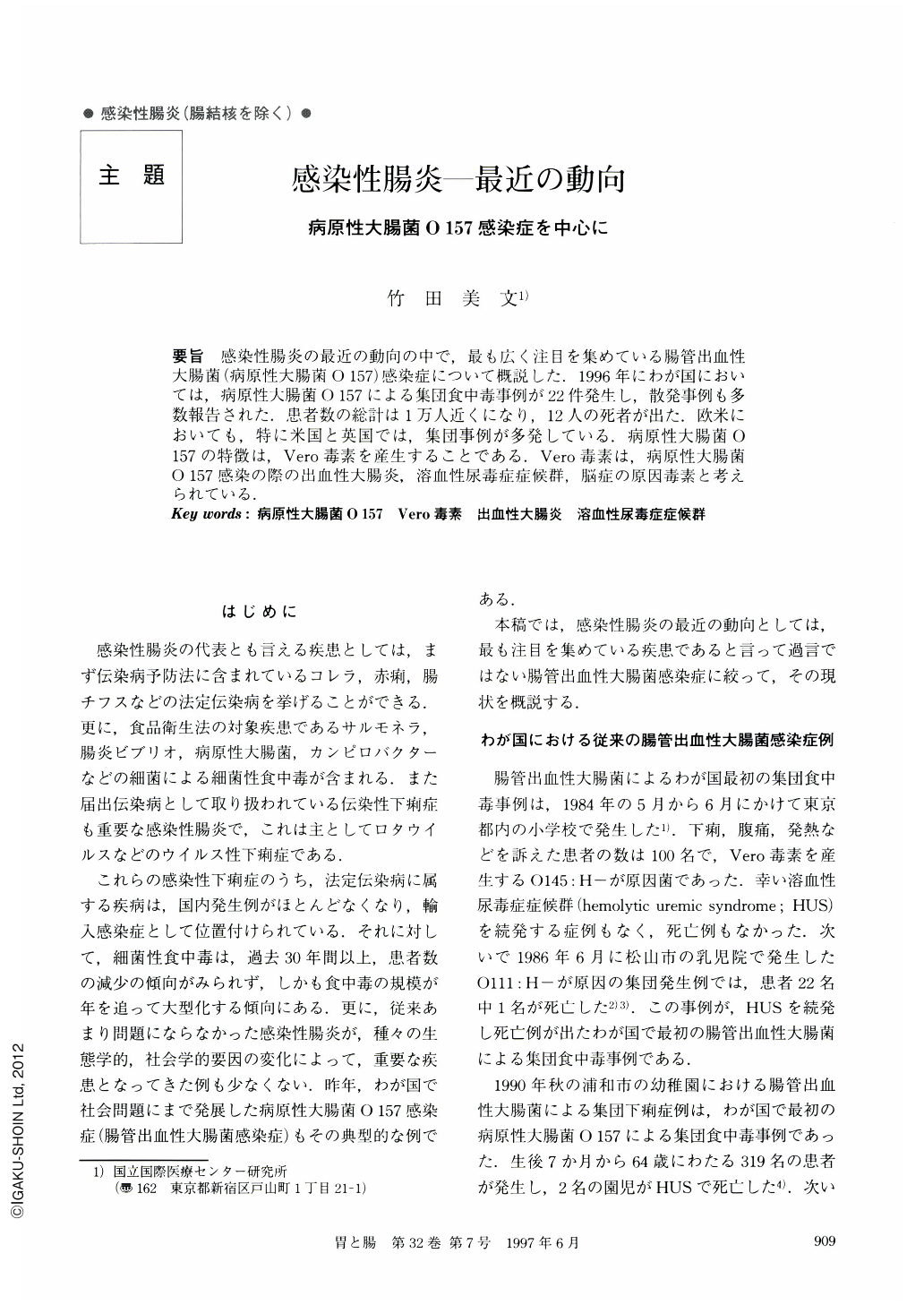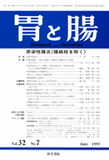Japanese
English
- 有料閲覧
- Abstract 文献概要
- 1ページ目 Look Inside
要旨 感染性腸炎の最近の動向の中で,最も広く注目を集めている腸管出血性大腸菌(病原性大腸菌O157)感染症について概説した.1996年にわが国においては,病原性大腸菌O157による集団食中毒事例が22件発生し,散発事例も多数報告された.患者数の総計は1万人近くになり,12人の死者が出た.欧米においても,特に米国と英国では,集団事例が多発している.病原性大腸菌O157の特徴は,Vero毒素を産生することである.Vero毒素は,病原性大腸菌O157感染の際の出血性大腸炎,溶血性尿毒症症候群,脳症の原因毒素と考えられている.
Among various infectious types of enteritis, enterohemorrhagic Escherichia coli O157:H7 infection is the focus of not only medical but also social interest.
In 1996, an unexpectedly large number of outbreaks due to E.coli O157: H7 occurred in our country. A total of 22 were reported from May through October. Among them one outbreak at Sakai City in July and August was extremely large and more than 5,700 patients with 3 deaths were reported. A unique characteristic of these outbreaks was that 8 of 22 occurred in primary and secondary schools due to luncheons provided by schools.
A large foodborne outbreak was also reported in Scotland in November, 1996, in which over 400 persons were affected, with 17 deaths, mainly the elderly. In the United States, many outbreaks have been reported since the first report of a foodborne outbreak in 1982 during which more than 20,000 patients with more than 100 deaths were reported in 1996.
One of the most important characteristics of E.coli O157: H7 is its production of Vero toxins (or Shiga-like toxins). Symptoms or complications of E.coli O157: H7 infection, such as hemorrhagic colitis and hemolytitic uremic syndrome, are caused by Vero toxins.
It is recommended that antibiotic therapy, such as that with fosfomycin and kanamycin, is effective to prevent the possible development of hemorrhagic uremic syndrome.

Copyright © 1997, Igaku-Shoin Ltd. All rights reserved.


